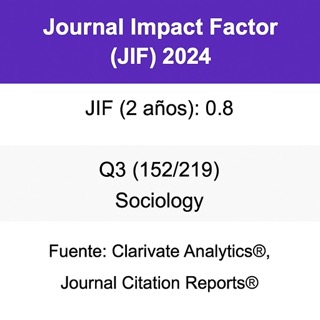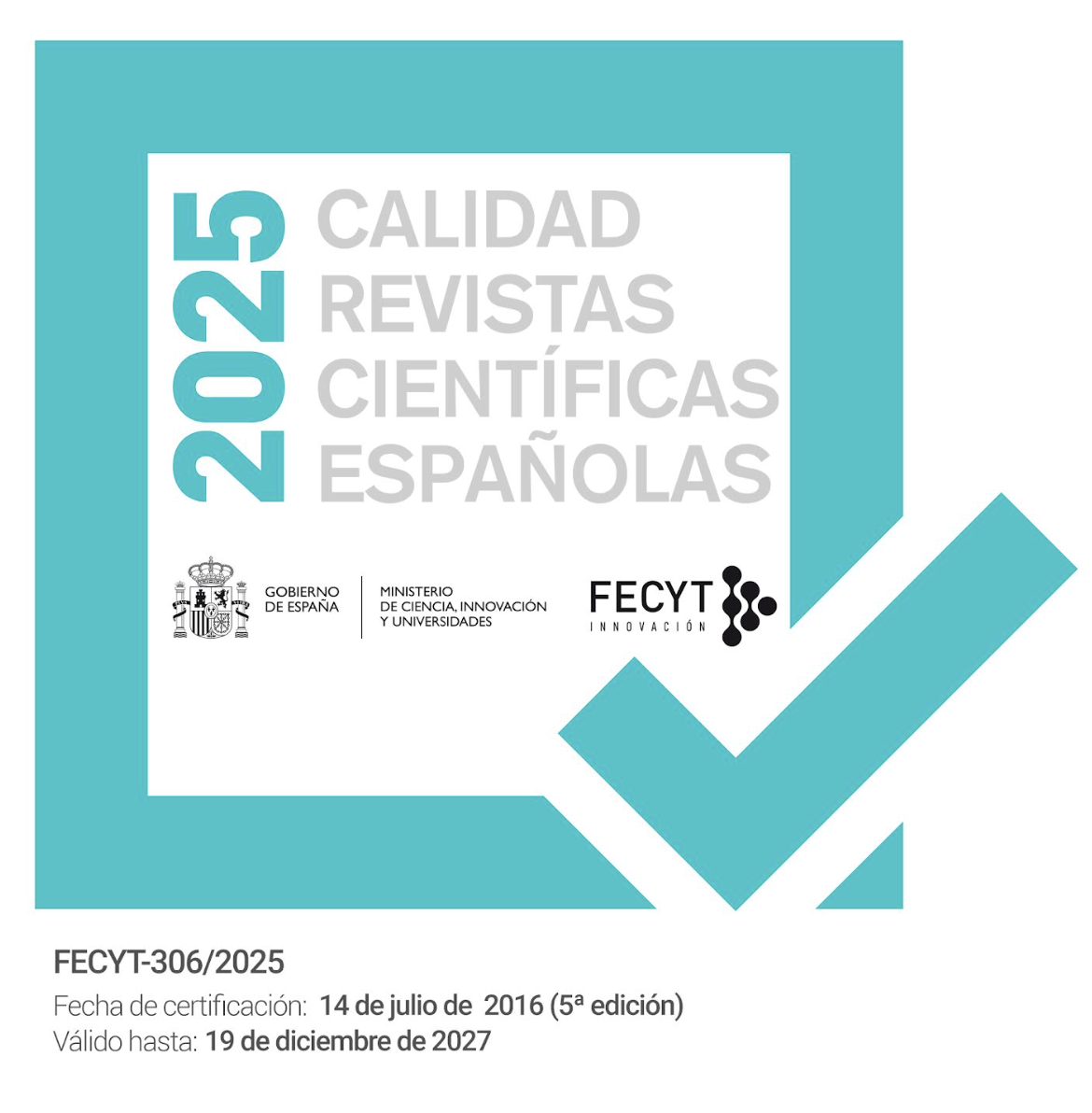A través de los ojos de un niño: el significado y la negociación de la integración desde la perspectiva de los alumnos de Viena
DOI:
https://doi.org/10.22325/fes/res.2024.216Palabras clave:
integración, educación, enfoque centrado en el niño, alumnos, AustriaResumen
Los estudiosos han señalado que el discurso dominante sobre la integración en Austria se caracteriza por una visión asimilacionista. Esto resulta especialmente evidente en diversas medidas de política educativa -por ejemplo, las clases de apoyo de alemán (Deutschförderklassen) – que ilustran que no se tiene suficientemente en cuenta el bienestar de los inmigrantes. Con este telón de fondo, es interesante analizar en qué medida el discurso predominante configura la forma en que los jóvenes entienden la integración. Aplicando un enfoque centrado en los niños, realizamos 87 entrevistas y 13 grupos de discusión con alumnos de seis institutos de secundaria de Viena. No sólo encontramos muchas interpretaciones diferentes de la integración, sino también contradicciones, ambigüedades y ambivalencias con respecto al concepto de integración. Nuestras conclusiones sugieren que es vital que la sociedad perciba a los jóvenes como actores activos en el discurso de la integración y que tenga en cuenta el significado y la negociación de la integración, así como las necesidades y el bienestar de los inmigrantes desde la perspectiva de los alumnos, a fin de sostener el proceso de integración de los niños inmigrantes.
Citas
Ager, A., & Strang, A. (2008). Understanding Integration: A Conceptual Framework. Journal of Refugee Studies, 21(2), 166-191. https://doi.org/10.1093/jrs/fen016
Ahlund, A., & Rickard, J. (2016). Peruvian Meatballs? Constructing the Other in the Performance of an Inclusive School. Nordic Journal of Migration Research, 6(3), 166-174. https://doi.org/10.1515/njmr-2016-0021
Alpagu, F., Dausien, B., Draxl, A., & Thoma, N. (2019). Die Bedeutung von Deutsch und Mehrsprachigkeit im schulischen Kontext. Erfahrungen aus einem Projekt mit einer «Übergangsklasse» für geflüchtete Jugendliche. ÖDaF-Mitteilungen, 35(1+2), 207-223. https://doi.org/10.14220/odaf.2019.35.1.207
AMS. (n.d.). Das Integrationsjahr. AMS. https://www.ams.at/arbeitsuchende/arbeiten-in-oesterreich-und-der-eu/das-integrationsjahr
APA. (2018, December 17). Medienanalyse: Migrationsdiskurs dominierte 2018 erneut die österreichische Berichterstattung. APA. https://www.ots.at/presseaussendung/OTS_20181217_OTS0025/medienanalyse-migrationsdiskurs-dominierte-2018-erneut-die-oesterreichische-berichterstattung-anhang
Ataç, I., & Rosenberger, S. (2013). Inklusion/Exklusion – ein relationales Konzept der Migrationsforschung. In I. Ataç, & S. Rosenberger (Eds.), Politik der Inklusion und Exklusion (pp. 35-52). V&R Unipress.
Atamturk, N. (2018). The Role of English as a Foreign Language Classes in Tolerance Education in Relation to School Management Practices. Quality and Quantity, 52(2), 1167-1177. https://doi.org/10.1007/s11135-017-0575-7
Baraldi, C., & Cockburn, T. (2018). Theorising Childhood: Citizenship, Rights and Participation (1st ed.). Palgrave Macmillan. https://doi.org/10.1007/978-3-319-72673-1
Bergstrom-Wuolo, M., Dahlström, J., Hertting, K., & Kostenius, C. (2018). My Heart has no Hurt: the Health of Young Immigrants. International Journal of Migration, Health, and Social Care, 14(3), 290-304. https://doi.org/10.1108/IJMHSC-02-2018-0004
Bundesministerium für Inneres. (2018). ASYLSTATISTIK 2018. https://www.bmi.gv.at/301/Statistiken/files/Jahresstatistiken/Asyl-Jahresstatistik_2018.pdf
BMEIA. (2015). 50 Punkte – Plan zur Integration von Ayslberechtigten und subsidär Schutzberechtigten in Österreich. https://www.bmeia.gv.at/fileadmin/user_upload/Zentrale/Integration/Nationale_Integrationsfoerderung/50_Punkte-Plan.pdf
BMEIA. (2017). Bundesgesetz zur Integration rechtmäßig in Österreich aufhältiger Personen ohne österreichische Staatsbürgerschaft (Integrationsgesetz – IntG). https://www.ris.bka.gv.at/Dokumente/Erv/ERV_2017_1_68_a/ERV_2017_1_68_a.pdf
BMBWF. (2019). Deutschförderklassen und Deutschförderkurse. Leitfaden für Schulleiterinnen und Schulleiter. https://www.bmbwf.gv.at/Themen/schule/schulpraxis/ba/sprabi/dfk.html
Boland, C. (2020). Hybrid Identity and Practices to Negotiate Belonging: Madrid’s Muslim Youth of Migrant Origin. Comparative Migration Studies, 8(1), 1-17. https://doi.org/10.1186/s40878-020-00185-2
Buckel, S., Georgi, F., Kannankulam, J., & Wissel J. (2017). The European Border Regime in Crisis: Theory, Methods and Analyses in Critical European Studies. Studien 8/2017. Rosa Luxemburg Foundation.
Burman, E. (1996). ‘Constructing and Deconstructing Childhood: Images of Children and Charity Appeals.’ In J. Haworth (Ed.), Psychological Research: Innovative Methods and Strategies. Routledge. https://doi.org/10.4324/9780203138151
Buzan, B., Wæver, O., & de Wilde, J. (1998). Security: A new framework for analysis. Lynne Rienner Publishers. https://doi.org/10.2307/2586187
Clark, A. (2005). Ways of seeing: Using the Mosaic Approach to Listen to Young Children’s Perspectives. Beyond Listening. Children’s Perspectives on Early Childhood Services. In A. Clark, A., A. T. Kjørholt, & P. Moss (Eds.), Beyond Listening. Children’s Perspectives On Early Childhood Services (pp. 12-28). Policy Press. https://doi.org/10.56687/9781447342403-006
Clark, A., & Moss, P. (2005). Spaces to Play: More Listening to Young Children Using the Mosaic Approach. National Children’s Bureau.
Clark, A., & Moss, P. (2011). Listening to Young Children: The Mosaic Approach (2nd ed.). National Children’s Bureau. https://doi.org/10.1080/13575279.2012.683656
Clark, A., & Statham, J. (2005). Listening to Young Children: Experts in their Own Lives. Adoption & Fostering, 29(1), 45-56. https://doi.org/10.1177/030857590502900106
Corsaro, W. A. (2005). The Sociology of Childhood. Pine Forge Press.
Council of the European Union. (2004). Common Basic Principles for Immigrant Integration Policy in the EU. https://ec.europa.eu/migrant-integration/library-document/common-basic-principles-immigrant-integration-policy-eu_en
Dursun, A., Wolter, S., Liepold, M., Buschmann, D., & Sauer, B. (2022). Contested Integration: Hegemony Projects in the Field of Education in Austria. Critical Policy Studies, 17(3), 464-483. https://doi.org/10.1080/19460171.2022.2149582
Ekström, E., Andersson, A., & Börjesson, U. (2021). “I’ve Got Many Stories You Know”—Problematizing Silence Among Unaccompanied Migrant Girls. Journal of International Migration and Integration, 23, 797-814. https://doi.org/10.1007/s12134-021-00841-1
Esser, H. (1999). Inklusion, Integration und ethnische Schichtung. Journal of Conflict and Violence Research, 1, 5-34.
Esser, H. (2009). Pluralisierung oder Assimilation? Effekte der multiplen Inklusion auf die Integration von Migranten. Zeitschrift für Soziologie, 38, 358-378.
European Commission. (2019). Integrating Asylum Seekers and Refugees Education and Training. European Commission Report. https://ec.europa.eu/migrant-integration/library-document/integrating-asylum-seekers-and-refugees-higher-education-europe_en
Faas, D. (2016). Negotiating Political Identities. Multiethnic Schools and Youth in Europe. Routledge. https://doi.org/10.1093/sf/sot014
Fattore, T., Mason, J., & Watson, E. (2007). Children’s Conceptualisation(s) of their Well-Being. Social Indicators Research, 80(1), 5-29. https://doi.org/10.1007/s11205-006-9019-9
Flubacher, M. (2021). The ‘Politics of Speed’ and Language Integration Policies: On Recent Developments in Austria. International Journal of Bilingual Education and Bilingualism, 1-11. https://doi.org/10.1080/13670050.2021.1954387
Georgi, V. B. (2015). Integration, Diversity, Inklusion: Anmerkungen zu aktuellen Debatten mit der deutschen Migrationsgesellschaft [Integration, diversity, inclusion: comments on current debates with the German migration society]. Zeitschrift für Erwachsenenbildung, (2), 25-27. https://www.die-bonn.de/zeitschrift/22015/einwanderung-01.pdf
Georgi, F. (2019). Towards Fortress Capitalism. The Restrictive Transformation of Migration and Border Regimes as a Reaction to the Capitalist Multi-Crisis. Canadian Review of Sociology, 56(4), 556-579. https://doi.org/10.1111/cars.12264
Gogolin, I. (2004). Lebensweltliche Mehrsprachigkeit. In K. R. Bausch (Ed.), Mehrsprachigkeit im Fokus. Arbeitspapiere der 24. Frühjahrskonferenz zur Erforschung des Fremdsprachenunterrichts (pp. 55-61). Narr.
Gornik, B. (2020). The Principles of Child-Centred Migrant Integration Policy: Conclusions from the Literature. Annales Series Historia et Sociologia, 30(4), 531-542. https://doi.org/10.19233/ASHS.2020.35
Gornik, B., & Sedmak, M. (2021). The Child-Centred Approach to the Integration of Migrant Children: The MiCREATE Project. In M. Sedmak, F. Hernández-Hernández, J. M. Sancho-Gil, & B. Gornik (Ed.), Migrant Children’s Integration and Education in Europe: Approaches, Methodologies and Policies (pp. 99-118). Ediciones Octaedro SL.
Grosjean, F. (2020). Individuelle Zwei- und Mehrsprachigkeit, In I. Gogolin, A. Hansen, S. McMonagle & D. Rauch (Ed.), Handbuch Mehrsprachigkeit und Bildung (pp. 13-21). Springer. https://doi.org/10.1007/978-3-658-20285-9_2
Gruber, O., Mattes, A., & Stadlmair, J. (2016). Die meritokratische Neugestaltung der österreichischen Integrationspolitik zwischen Rhetorik und Policy. Österreichische Zeitschrift für Politikwissenschaft, 45(1), 65-79. https://doi.org/10.15203/ozp.1090.vol45iss1
Gruber, O. (2018). Diversität und Integration im Schulsystem. Empirische Befunde zur Ungleichheit und ihre bildungspolitischen Konsequenzen. GW-Unterricht, 1, 5-19. https://doi.org/10.1553/gw-unterricht151s5
Hernández-Hernández, F., Sancho-Gil, J., & Arroyo-González, J. (2021). The Importance and Necessity of Researching Emigration and its Relationship with School Education. Culture and Education, 33(4), 585-596. https://doi.org/10.1080/11356405.2021.1987070
Hess, S., & Kasparek, B. (2017). Under Control? Or Border (as) Conflict: Reflections on the European Border Regime. Social Inclusion, 5(3), 58-68. https://doi.org/10.17645/si.v5i3.1004
Horgan, D., & Ní Raghallaigh, M. (2019). The Social Care Needs of Unaccompanied Minors: the Irish Experience. European Journal of Social Work, 22(1), 95-106. https://doi.org/10.1080/13691457.2017.1357018
Huxel, K. (2020). Schulentwicklung unter Berücksichtigung der Mehrsprachigkeit. In I. Gogolin, A. Hansen, S. McMonagle, & D. Rauch (Eds.), Handbuch Mehrsprachigkeit und Bildung (pp. 233-238). Springer. https://doi.org/10.1007/978-3-658-20285-9_34
Huysmans, J. (2000). The European Union and the Securitization of Migration. Journal of Common Market Studies, 38(5), 751-777. https://doi.org/10.1111/1468-5965.00263
Janker, K. (2015, July 28). Eskalieren, ohne es zu merken. Süddeutsche Zeitung. https://www.sueddeutsche.de/politik/berichterstattung-ueber-fluechtlinge-eskalieren-ohne-es-zu-merken-1.2584188-2
Krzyżanowski, M., Triandafyllidou, A., & Wodak, R. (2018). The Mediatization and the Politicization of the “Refugee Crisis” in Europe. Journal of Immigrant & Refugee Studies, 16(1-2), 1-14. https://doi.org/10.1080/15562948.2017.1353189
Krzyżanowski, M., & Wodak, R. (2008). Multiple Identities, Migration and Belonging: ‘Voices of Migrants’. In C. R. Caldas-Coulthard, & R. Iedema (Eds.), Identity Trouble. Palgrave Macmillan. https://doi.org/10.1007/978-3-531-92615-5_16
Kunz, T. (2011). Integration fördern und fordern. In S. K. Amos, W. Meseth, & M. Proske (Eds.), Öffentliche Erziehung revisited (pp. 323-344). VS Verlag für Sozialwissenschaften. https://doi.org/10.1007/978-3-531-92615-5_16
Lawrence , J. A., Kaplan, I., & Collard, A. H. (2018). Perspectives of refugee children resettling in Australia on indicators of their wellbeing. Child Indicators Research, 12, 943-962. https://doi.org/10.1007/s12187-018-9568-x
Luangrath, N. (2016). No Date on the Door: Direct Provision Housing, Child Asylum Seekers, and Ireland's Violations of the United Nations Convention on the Rights of the Child. Palgrave Macmillan. https://doi.org/10.1007/978-3-319-40691-6_14
Malmsten, J. (2014). Unaccompanied Children Living in Transitional Houses – Voices From Sweden. International Journal of Migration, Health, and Social Care, 10(1), 18-35. https://doi.org/10.1108/IJMHSC-10-2013-0037
Mayall, B. (2000). The Sociology of Childhood in Relation to Children’s Rights. The International Journal of Children’s Rights. https://doi.org/10.1163/15718180020494640
Mayall, B. (2002). Understanding childhoods: A London study. In Conceptualising child-adult relations (pp. 128-142). Routledge.
Mayeza, E. (2017). Doing Child-centered Ethnography: Unravelling the Complexities of Reducing the Perceptions of Adult Male Power during Fieldwork. International Journal of Qualitative Methods, 16, 1-10. https://doi.org/10.1177/1609406917714162
Medarić, Z., Sedmak, M., Dežan, L., & Gornik, B. (2021). Integration of migrant children in Slovenian schools. Culture and Education, 33(4), 758-785. https://doi.org/10.1080/11356405.2021.1973222
Dursun, A., Wolter, S., Buschmann, D., & Sauer, B. (2019). Reception Communities Political and Media Discourse Analysis: A Review of Public Opinion. Austria: Znanstveno-raziskovalno središče.
Mohamed, S., & Thomas, M. (2017). The Mental Health and Psychological Well-Being of Refugee Children and Young People: An Exploration of Risk, Resilience and Protective Factors. Educational Psychology in Practice, 33(3), 249-263. https://doi.org/10.1080/02667363.2017.1300769
Ni, S., Chui, C. H., Ji, X., Jordan, L., & Chan, C. L. (2016). Subjective Well-Being Amongst Migrant Children in China: Unravelling the Roles of Social Support and Identity Integration. Child Care Health Dev, 42(5), 750-758. https://doi.org/10.1111/cch.12370
Österreichisches Parlament. (2018). Budgetanalyse 2018 und 2019. https://www.parlament.gv.at/dokument/budgetdienst/budget/BD_-_Budgetanalyse_2018_und_2019.pdf
Plocikiewicz, M. (2011). Struggling between two cultures: the religious and cultural identity of the Moroccan children community in Barcelona. ACE: Architecture, City and Environment, 6(17), 359-376. https://doi.org/10.5821/ace.v6i17.2539
Pries, L. (2015). Teilhabe in der Migrationsgesellschaft: Zwischen Assimilation und Abschaffung des Integrationsbegriffs. IMIS-Beiträge, 47, 7-36.
Regierungsprogramm 2017–2022. (2017). Zusammen. Für unser Österreich. Regierungsprogramm 2017–2022. https://www.oeh.ac.at/sites/default/files/files/pages/regierungsprogramm_2017-2022.pdf
Rheindorf, M. (2017). Integration durch Strafe? Die Normalisierung paternalistischer Diskursfiguren zur ‚Integrationsunwilligkeit‘. Zeitschrift für Diskursforschung, 2, 182-206.
Rosenbaum, J. E. (2001). Beyond College for All: Career Paths for the Forgotten Half. Russell Sage Foundation.
Rosenberger, S., & Gruber, O. (2020). Integration erwünscht? Österreichs Integrationspolitik zwischen Fördern, Fordern und Verhindern. Czernin.
Ross, C. E., & Broh, B. A. (2000). The Roles of Self-Esteem and the Sense of Personal Control in the Academic Achievement Process. Sociology of Education, 73(4), 270-284. https://doi.org/10.2307/2673234
Ross, C. E., & Mirowsky, J. (1989). Explaining the Social Patterns of Depression: Control and Problem Solving–or Support and Talking?. Journal of Health and Social Behavior, 30(2), 206-219. https://doi.org/10.2307/2137014
Scholten, P. (2011). Framing Immigrant Integration. Dutch Research-Policy Dialogues in Comparative Perspective. Amsterdam University Press. https://doi.org/10.1515/9789048513604
Sedmak, M., & Medarić, Z. (2017). Life Transitions of the Unaccompanied Migrant Children in Slovenia: Subjective views. Dve Domovini/Two Homelands, 27(45), 61-76. https://doi.org/10.3986/dd.2017.1.05
Staatsprojekt Europa. (2014). Kämpfe um Migrationspolitik: Theorie, Methode und Analysen kritischer Europaforschung. Kultur und soziale Praxis. Transcript.
Taft, R. (1953). The Shared Frame of Reference Concept Applied to the Assimilation of Immigrants. Human Relations, 6, 45-55. https://doi.org/10.1177/0018726753006001
Timm, M. (2016). The Integration of Refugees into the German Education System. eJournal of Education Policy, (Special Issue). https://in.nau.edu/wp-content/uploads/sites/135/2018/08/Timm-ek.pdf
Uyan-Semerci, P., & Erdogan, E. (2017). Child Well-Being Indicators Through the Eyes of Children in Turkey: A Happy Child Would be One Who... . Child Indicators Research, 10(1). 267-295. https://doi.org/10.1007/s12187-016-9377-z
Van Houtte, M., & Stevens, P. A. (2010). School ethnic composition and aspirations of immigrant students in Belgium. British Educational Research Journal, 36(2), 209-237. https://doi.org/10.1080/01411920902802180
Wodak, R. (2020). Normalization to the Right. Analyzing the Micro‐politics of the Far-Right. In S. Ashe, J. Busher, G. Macklin, & A. Winter (Eds.), Researching the Far Right: Theory, Method and Practice (pp. 336-351). Routledge.
Wolter, S., Tatzber, R., & Sauer, B. (2022). Waiting in the Austrian Asylum System: the Well-Being of Asylum-Seeking Children in a Phase of Liminality. Children & Society, 37(3), 806-819. https://doi.org/10.1111/chso.12630
Descargas
Publicado
Cómo citar
Número
Sección
Licencia
Derechos de autor 2024 Stella Wolter, Birgit Sauer

Esta obra está bajo una licencia internacional Creative Commons Atribución-NoComercial 4.0.
Todas las publicaciones de la Revista Española de Sociología se realizarán bajo una licencia abierta Creative Commons de Reconocimiento 4.0 Internacional (CC BY 4.0). Dicha licencia establece que los autores son los poseedores de los derechos de propiedad intelectual de sus trabajos, que pueden redistribuirse a cambio de un reconocimiento adecuado. Para más información de la licencia Creative Commons, consultar aquí.
Una vez aceptado un artículo para su publicación, la Revista Española de Sociología solicitará al denominado "autor para la correspondencia" la aceptación de una licencia obligatoria Creative Commons incluida en un acuerdo o contrato de publicación.




